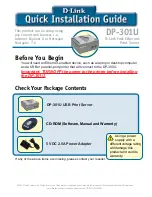
Confidential
EPSON
TITLE
SHEET
REVISION
NO.
SHEET
NEXT
B
RP-U420 series
Specification
(STANDARD)
19
18
2.1.2.8 Notes on resetting the printer through the interface
The printer reset is available through the interface nInit signal (pin 31) by changing the DIP switch
setting. (Refer to Table 2.1.5. DIP Switch settings for Printer Reset.)
Table 2.1.5 DIP Switch Setting for Printer Reset
Signal Line
DIP Switch
Reset Condition
Pin 31 (nInit)
DSW 2-1: ON
TTL-LOW level input
The printer reset through the nInit signal is only available with the SelectIn (1284-Active) signal at LOW.
To enable the printer reset, the following signal timing shall be satisfied.
Minimum reset pulse width TR: 50
µµµµ
s (min)
min.1 ms
nSelectIn
(1284-Active)
min. 0
nInit
min.50
µ
s
TR
2.1.2.9 Notes on setting DIP switch 1-6 to ON
1) The printer mechanism stops but does not become busy when: an error has occurred, printing
stops due to a paper-end, or paper is fed using the paper feed button.
2) When using DLE ENQ be sure that the receive buffer does not become full.
•
When using a host that cannot transmit data when the printer is busy:
If an error has occurred, DLE ENQ cannot be used when the printer is busy due to a receive
buffer-full state.
•
When using a host that can transmit data when the printer is busy:
When the receive buffer becomes full while transmitting bit-image data, DLE ENQ used while
sending the bit-image data is processed as bit-image data. The data transmitted when the
receive buffer is full may be lost.
Example: Check the printer status using GS r 1 or GS r 49 after transmitting each line of data.
Transmit one line of data so that the receive buffer does not become full.
2.1.2.10 Reception of status from the printer through the bidirectional parallel interface
In the bidirectional parallel interface specifications, the printer status transmission is available by using
the both-way communication facility in the Nibble/Byte Modes in accordance with the IEEE 1284.
In this case, as opposed to the RS-232 serial interface specifications, the real-time interruptions from the
printer to the host are disabled, and thus, precautions must be taken to the following.
1) Allowable capacity of the printer internal buffer is 99 bytes. The status signals exceeding this
capacity will be discarded. To prevent possible loss of status, the host shall be ready for data
acceptance (Reverse Mode).
















































